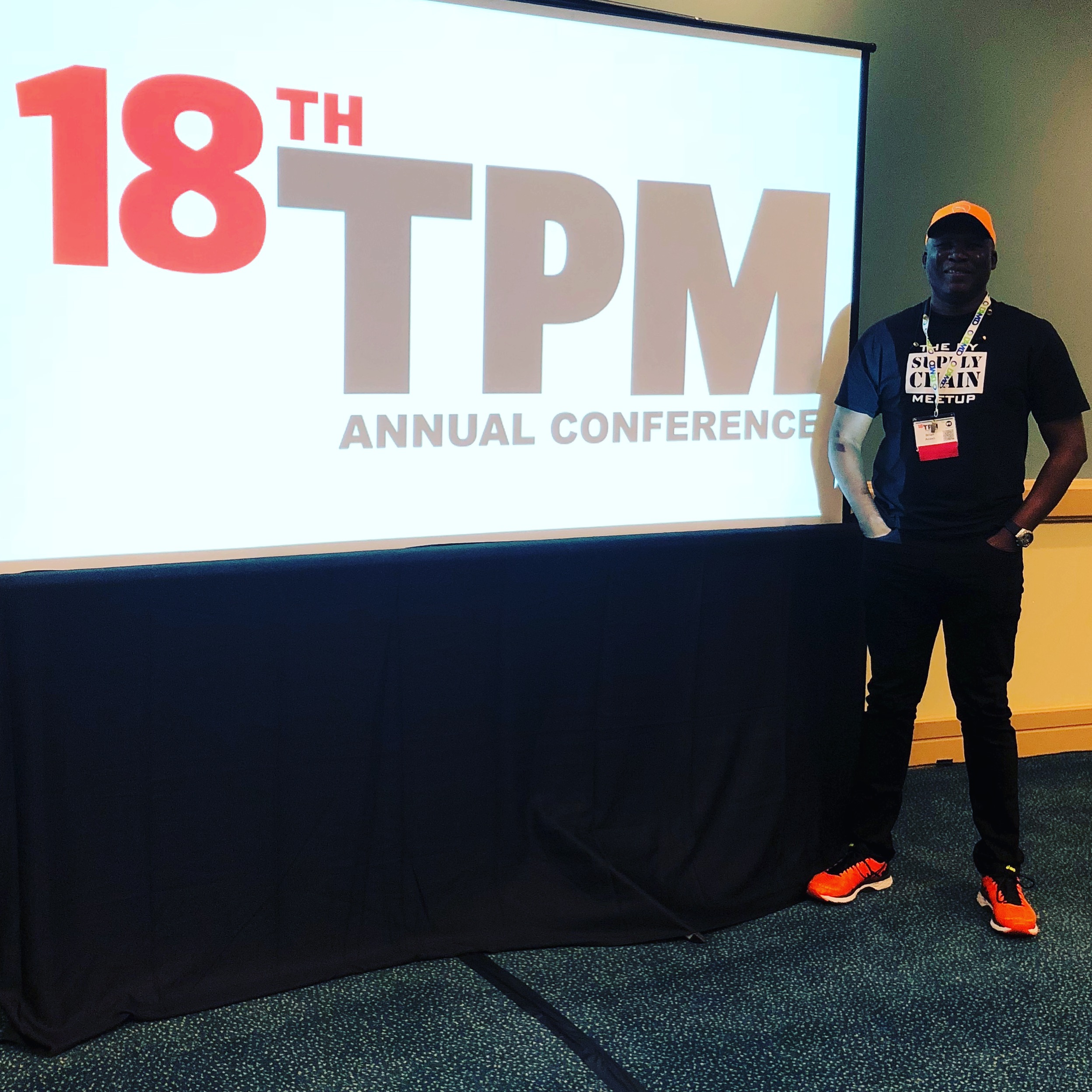
Notes:
- This blog post represents my opinions only. It does not represent the opinions of my teammates at Particle Ventures (formerly known as KEC Ventures), nor does it represent the opinions of any one at Journal of Commerce, JOC.com, JOC Events, IHS Markit or any related entities therein. It also does not represent the opinions of any of the people I mention specifically.
- Particle Ventures is not an investor in any of the startups highlighted in this post.
I have not been shy about telling people how much I hate travelling, and how much I hate big conferences. So, it takes a lot to persuade me to travel in order to attend a big conference. This year, I am happy I broke my own rules in order to attend TPM 2018.
What is TPM? TPM stands for Trans-Pacific Maritime . . . and TPM2018 is the 18th successive annual instalment of the conference. I have not read an official history of TPM, but from what I have gathered it began as the brainchild of Peter Tirschwell, Senior Director of Editorial Content at IHS Markit and a few of his teammates and colleagues at IHS Markit and Journal of Commerce. Early last year, after one of my conversations with Fauad Shariff from CoLoadX he said to me “You need to attend TPM. You’d get a lot out of it.” I had just published a needlessly long blog post; Industry Study: Ocean Freight Shipping (#Startups).
Early this year, Peter emailed me to ask if I’d consider moderating an Innovation Jam at TPM. We had previously met in September 2017, while I was at IHS Markit in Manhattan, NY visiting Daniel James who also works at IHS Markit. Given my experience at CMA2017, and how much more I’d learned about supply chain in general, and shipping in particular since February 2016, I knew I wanted to see what TPM is all about. So, after talking it over with my teammates at Particle Ventures, I said “yes”.
I have always believed that seed-stage VCs should spend as much time learning about industries in which they intend to invest. Some of that learning comes from reading books, media articles, and research articles. Some of that also involves speaking with individuals who actually work within the industry. Another avenue to learning about an industry is attending industry conferences, because conferences allow you to get a sense of the community or communities that come together to makeup the industry. Done well, conferences enable you to learn about trends and issues of concern within the industry, and simultaneously meet individuals for on-on-one conversations.
Context – Who Am I? What did I Expect?
I am a partner at Particle Ventures, a seed-stage venture fund based in New York City that invests in technology startups with a focus on Supply Chain & Industrial Intelligence. Our team at Particle believes the greatest technological shift of our time is happening at the intersection of data and heavy industry. Particle is built by the same team that built KEC Ventures.
Together with a team of co-organizers, I also founded The New York Supply Chain Meetup in August 2017 – to my mind, a logical next step in my evolution as a VC developing a specialty in supply chain and industrial intelligence; I wanted to hangout with people who think obsessively about software, global supply chains, and innovation. We’re building multidisciplinary community to bring techies and supply chain professionals together to pursue ways to enable innovations that will lead to the supply chain networks of the future. We expect to launch a website soon. Stay tuned!
As a result of my background, it is very likely my interpretation of things will seem strange. It will also often be wrong. When I am wrong, I hope you’ll let me know, and tell me how to correct my knowledge. If you are in the shipping industry and want to connect, or if you are a startup creating a new product for the supply chain industry . . . I am easy to find online. Don’t hesitate to connect.
To say TPM2018 met my expectations would be an understatement . . . It blew expectations completely out of the water. Here’s my recap.
Sunday, March 4
I thought it would be helpful to attend the Editorial Luncheon, because I find what journalists do to be similar to what early stage VCs do in some respects. So I wanted some insight into how journalists who cover container shipping and international logistics are thinking about the industry. The luncheon was phenomenal . . . I told someone after it was over that if I’d been told that was it, we all had to go back home because TPM2018 had been cancelled, I still would have felt the trip was absolutely worth it.
I know, I know . . . You’d like to know more details. Sorry. That conversation was off the record.
Next, I had coffee with Chayenne Wiskerske. Chayenne is a managing director responsible for sales and management at Wiskerske Onions, a family run business that has existed since 1933. She’s the 4th generation of her family to go into the business. Wiskerske Onions is a Dutch company that exports onions to 110 markets, and has a network of growers in 23 countries. We talked about many things, including
- The use of distributed ledger technologies and digital tokens as a way to keep track of produce in the supply chain with transparency and visibility, but just as important,
- As an alternative to existing banking infrastructure in situations where multinational corporations like Wiskerske Onions encounter foreign currency risk due to regulations that severely limit how much foreign currency they can transfer out of countries in which they do business around the world.
Monday, March 5
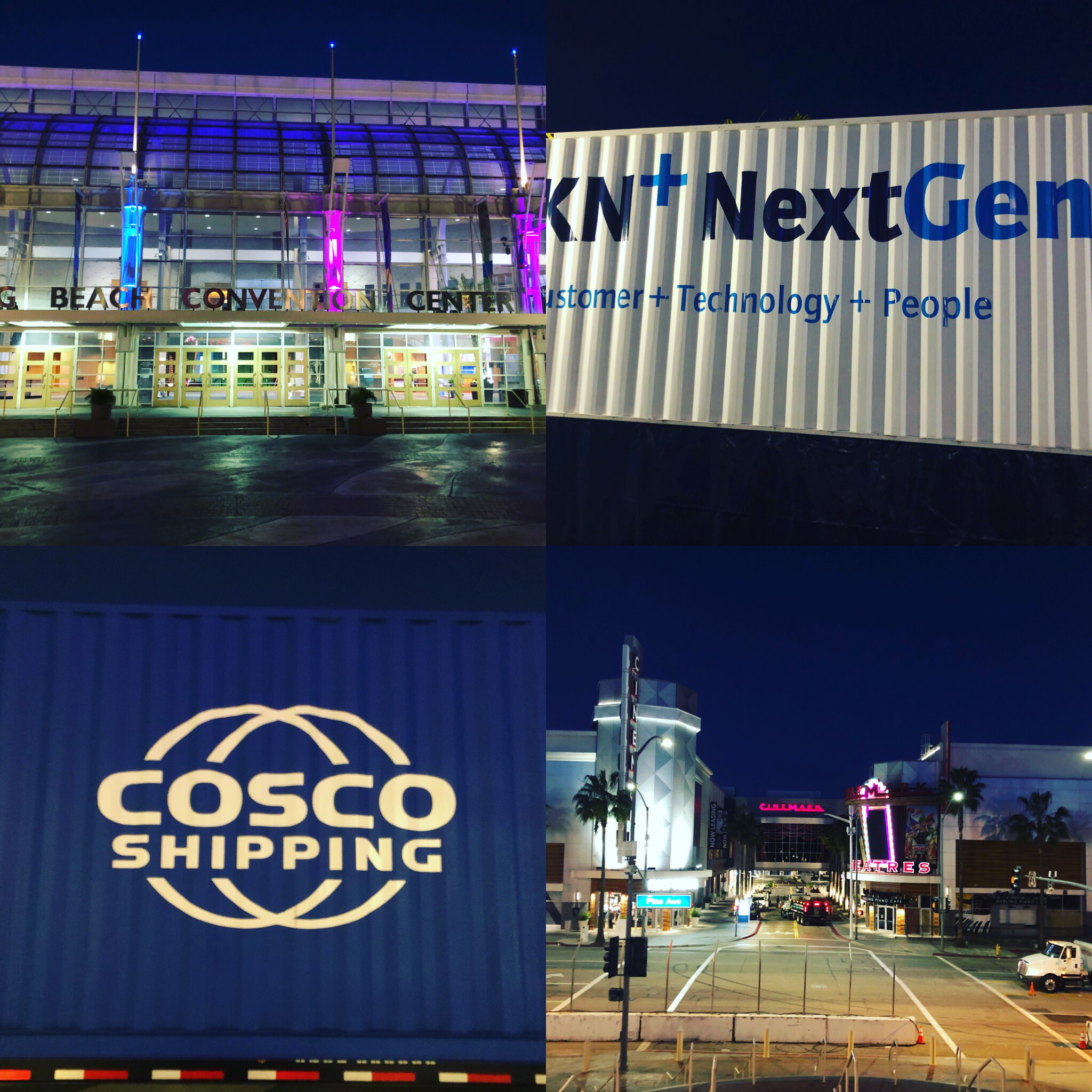
I started my morning by meeting with Christy Coffey, a cybersecurity collaboration advocate, computer scientist, and inventor.
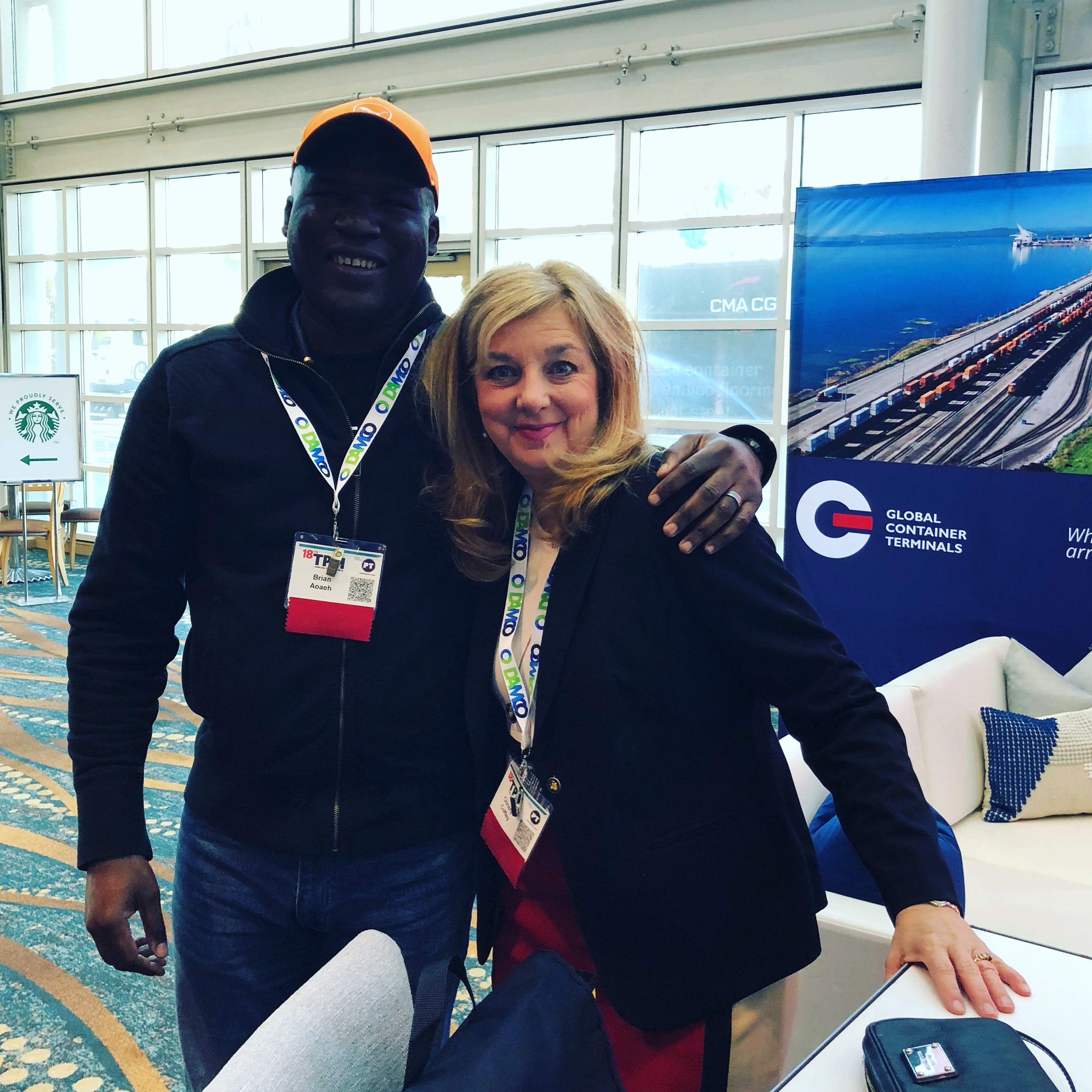
The morning’s program began with welcome remarks, followed by the keynote address. This year, Jochen Thewes, CEO and Chairman of The Board of Management at DB Schenker delivered the keynote. A few things struck me about the welcome remarks, as well as the keynote . . .
- Software technology is top of mind . . . The theme for the Innovation Jam frames things nicely and captures the mood around technology in maritime shipping;Beyond the hype and the promises “What Can Technology Really Solve?”
- Artificial Intelligence is already making a small difference for some of the big players in the industry . . . The goal now should be to apply AI even more broadly to augment existing efforts. Some of the sentiments about AI in maritime shipping are echoed here: Cargo Drones and Data Swarms: Experts Weigh In on Digital Transformation in Shipping & Maritime
- Like everyone else, people in the shipping industry are really excited about bitcoin and blockchain. The jury is still out how or if the shipping industry will adopt it as quickly as some hope.
- Jochen Thewes is a really good public speaker.
During the keynote, Jochen Thewes made a remark about how a team of mathematicians DB Schenker has hired relatively recently has made a big difference in how they run their business. I chuckled and muttered under my breath . . . “Uhm. That’s what mathematicians do. They solve problems.” The gentle man sitting next to me looked at me and said, “You find that impressive? The forecasting timeline?” I replied, “Yes. Given the business they are in, yes, that’s impressive.” Then I looked at him and asked, “What do you do?”
He said, “I am the Chief Economist at Maersk.”
My mind was immediately blown.
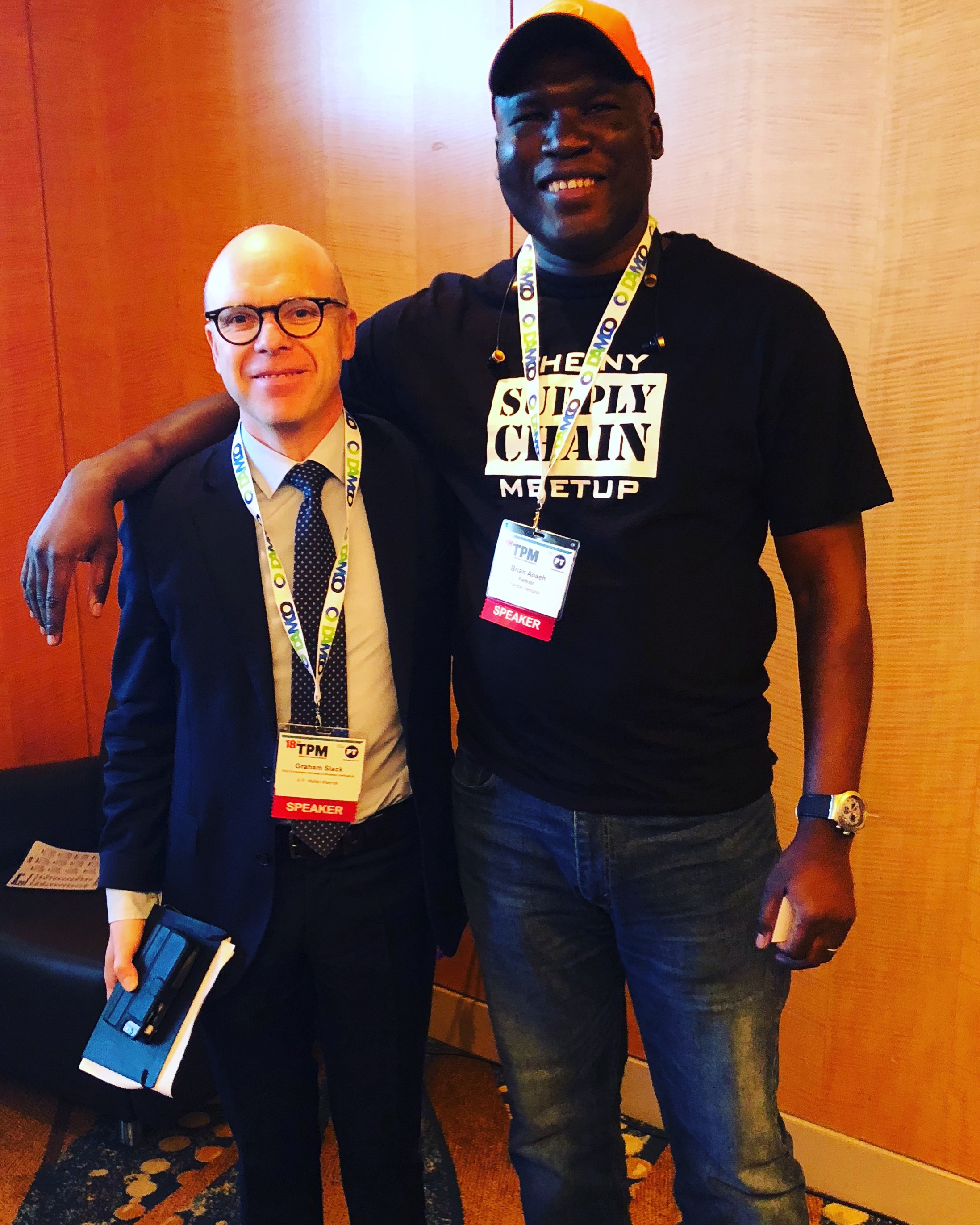
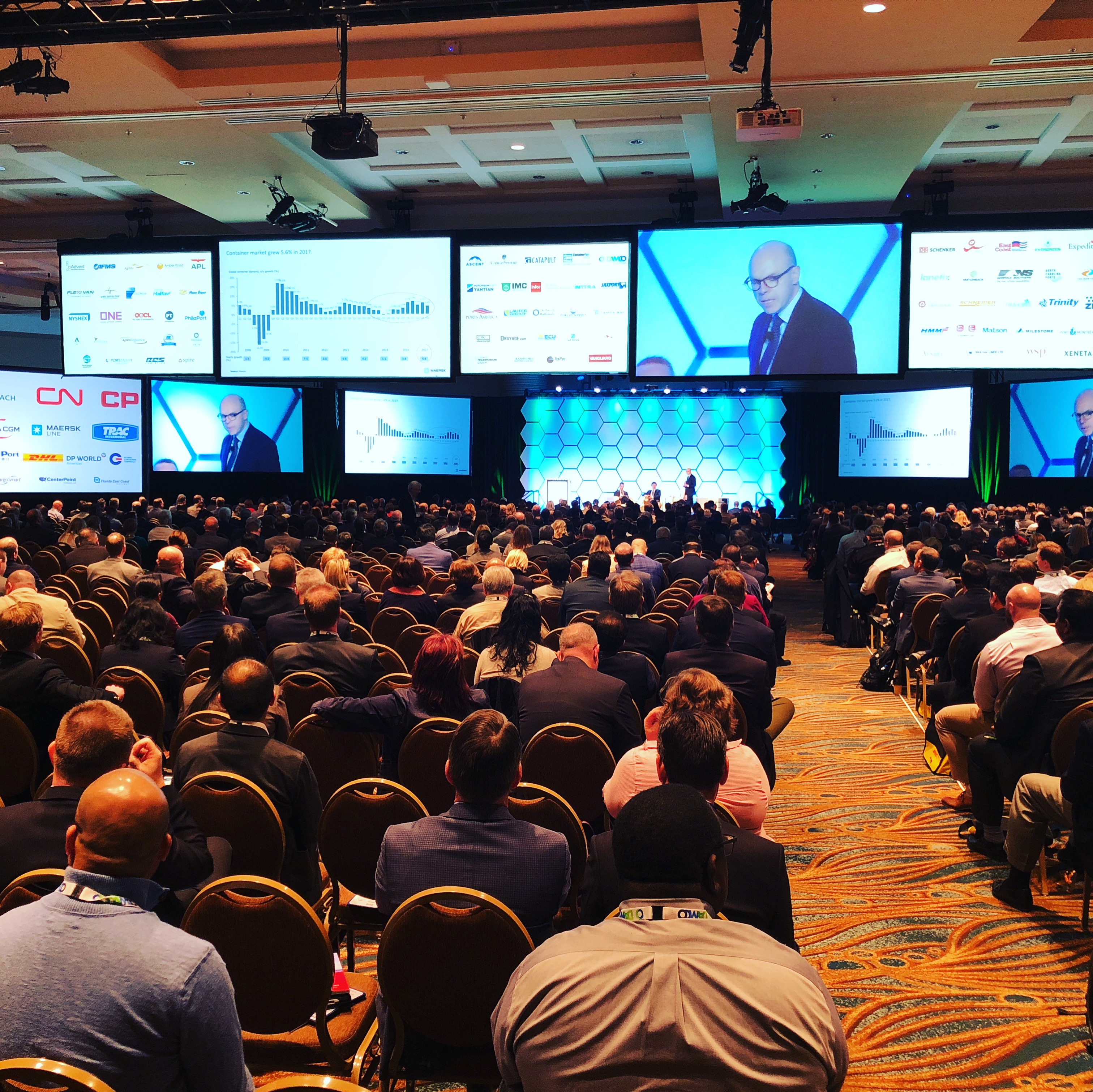
Another highlight on Monday, was the concurrent session Technology II: Blockchain – An Example of How it Could Apply to Shipping. It was moderated by Daniel James, Director of Commodities Financial Markets at IHS Markit. The panelists were;
- George Goldman, President, Zim USA
- Gadi Ruschin, CEO, Wave Ltd
- Bjorn Vang Jensen, VP of Global Logistics, Electrolux, and
- Jason Manganaro, VP of Sales, SPARX Logistics.
The room was packed with people interested in hearing about a specific implementation of Wave’s distributed ledger document management network. From Wave’s website; “Wave has created a peer-to-peer and completely decentralized network that connects all carriers, banks, forwarders, traders and other parties of the international trading supply chain. Using decentralized technologies, all communication between these parties will be direct and will not pass through a specific central entity. Due to its decentralized nature, the Wave network will not have any single point of failure and will not rely on any single entity.”
Tuesday, March 6
As you can imagine I woke up feeling nervous on Tuesday morning, which is the day that the two hour-long Innovation Jam Sessions were held. It’s one thing to be in front of a big audience and to have no idea who’s judging you . . . It’s a completely different issue to be in front of the best and brightest of the industry . . . . Especially, for someone like me; I used to have a very severe stammer as a child. In fact, the first time I spoke in public in secondary school, the audience booed at me. Nevermind, I endured all 9 minutes of it. The story has a happy ending, so ask me about it when we meet in real life.
To calm my nerves I went and took a walk around the Grand Ballroom at the Long Beach Convention Center while it was empty.
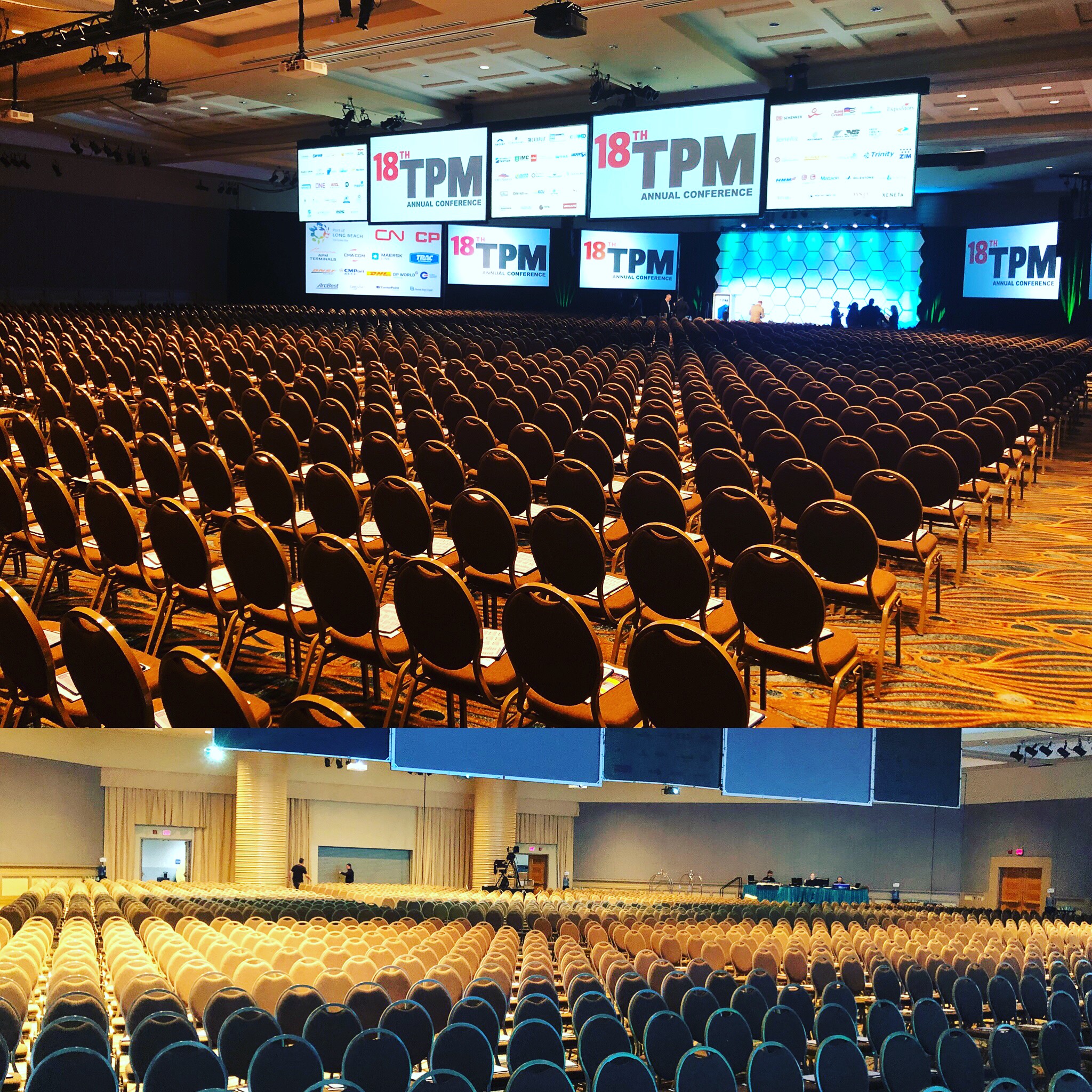
Personally, I think the highlight of Tuesday’s agenda was listening to Lior Ron, cofounder of Otto and now head of Uber Freight discuss Uber Freight’s vision for digital freight marketplaces during TPM Accelerator: The Future of Trucking and What it Means for Shippers.
Here are two videos that explain the vision.
The Innovation Jam
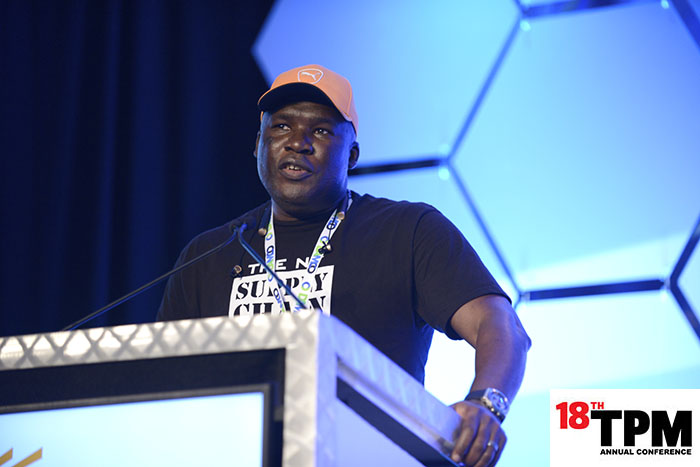
Quoting from TPM2018’s website; “Technology is all well and good, but what problems can it actually solve? That remains the disconnect between the hype and the reality of the digital revolution as it relates to transportation and logistics. Despite hundreds of millions of dollars invested in startups — not to mention massive technology investments by legacy players — basic problems that shippers experience every day remain unsolved. The question, then, is whether technology can solve them. The JOC editorial team set out to answer that by reaching out to beneficial cargo owners about their most severe supply chain challenges, and inviting technology providers and others to propose how they would solve them. The result was nearly 80 proposed solutions to 17 of the most severe BCO pain points, proposals that an ad hoc committee of BCOs then reviewed and ultimately decided which ideas it wanted to see presented at TPM. The result: Eight technology providers will present their proposed solutions to pain points that range from poor supply chain visibility, exception/contingency management, gate efficiency, rolling of cargo, and variability in ocean carrier schedules. Attendees will have the opportunity to vote on the solution that most convincingly addresses the pain point it addresses, with the winner announced at the end of the jam.”
What Problems Can Technology Really Solve? First of a Two-Part Track – Exports Session
As sponsor for this session, John Golob, CEO of Lanetix kicked things of with an introduction. For the first hour we had 4 presentations from 4 technology providers, each addressing a specific BCO pain-point.
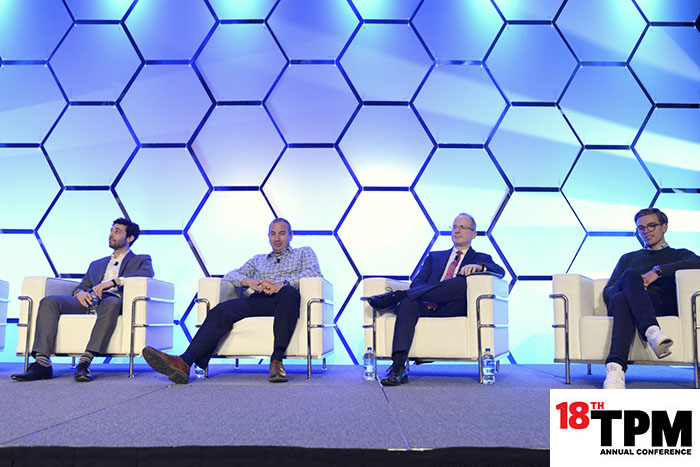
What Problems Can Technology Really Solve? Second of a Two-Part Track – Technology Session
As sponsor for this session, Todd Ericksrud, President and CEO of MatchBack Systems kicked things of with an introduction. For the second hour we again had 4 presentations from 4 technology providers, each addressing a specific BCO pain-point.
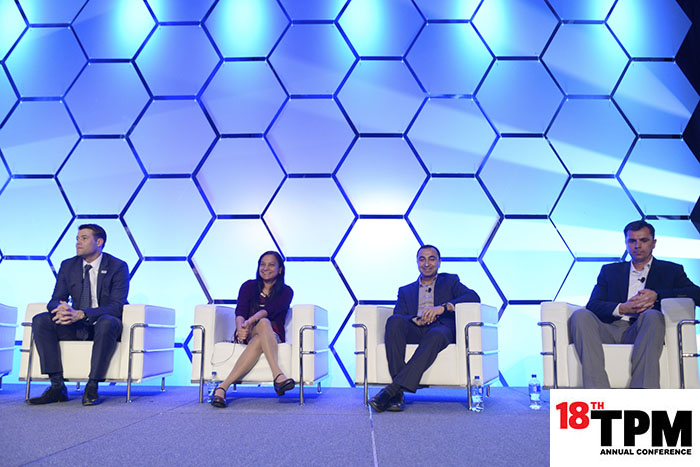
Based on votes from the audience, Gordon Downes and the New York Shipping Exchange walked away with the prize for most persuasively addressing the pain-point that NYSHEX had been invited to discuss with the audience of BCO representatives. That being said, I thought each of the presenters did a good job . . . I’m already thinking about ways to make the Innovation Jam at TPM2019 better for the folks chosen to present; more guidelines about where to place their emphasis, and more direction about how to prepare for a presentation like this – It’s a hybrid between a normal sales pitch, a product demo, and some elements of an Oxford-style debate – with possibly big implications for each business that’s presenting. At the least I think people who agree to moderate should do more to help each presenter put their best foot forward by helping guide presentation prep and practice ahead of the conference. This may also mean getting the process of selecting presenters for the innovation jam done about a month earlier than happened this year. That said . . . 2018 is the first year in TPM’s history that there’s been an Innovation Jam, so I think we’re off to a great start. Now the focus has to be on making the communication between startups and the maritime industry more robust and free-flowing.
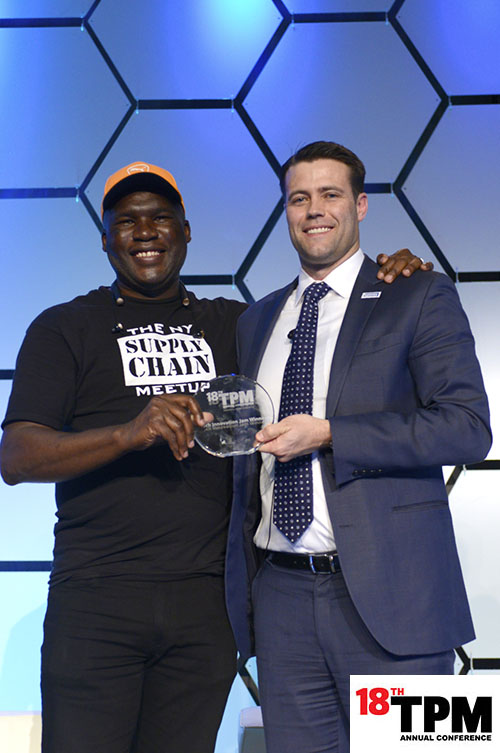
I felt beat after the Innovation Jam . . . So I went back to my hotel and walked 14.4 miles as part of my effort to get back in shape after suffering a case of plantar fasciitis last summer.
Wednesday, March 7
I was supposed to head back to NYC from Long Beach on Wednesday, in the afternoon . . . But snow storms on the East Coast caused me to change my plans. So Instead of heading out early, I now could stay for the full day of programing on TPM2018’s final day. I am happy I did.
I will highlight two things;
Technology Forum: Preparing The Port of Los Angeles-GE Transportation Information Portal for Prime Time was a series of presentations followed by a panel discussion that focused on how GE Transportation, the Port of Los Angeles, and the Port of Long Beach are working together, and with other stakeholders to remove bottlenecks to the free flow of intermodal cargo once it arrives at the ports. I hope this is only the first example in a a model that spreads to other major ports around the world. Essentially,GE Transportation, the Port of Los Angeles, and the Port of Long Beach have created a collaboration model that brings together technologies from large and small companies, and some early stage tech startups too to create a system that will ease congestion at the ports. Project44 and Voyage Control were part of the presentations, and they participated on the panel discussion too.
Lunch with Speaker – “Bold and Clear Predictions” was a presentation by Lars Jensen, CEO and Partner, SeaIntelligence Consulting. I am happy I had to stay for this because of my change in travel plans . . . He discussed some questions I have been thinking about over the duration that I have been teaching myself about supply chain and the opportunities for innovation driven by tech startups – the kind I hope to discover and invest in. For example;
- He talked about some of the business models that he believes will work, and he also talked about some of the business models that he feels have less promising prospects. He confirmed some of my assumptions, and some of my concerns on this topic.
- He highlighted some of the startups he feels have strong prospects of gaining adoption by the industry. I became happier as I heard him confirm some of my guesses when I was studying the opportunities for startups in the maritime shipping industry in February 2016.
- He also discussed industry dynamics I did not know . . . I now will go and spend some time following up on some of the threads he pointed us towards.
- He discussed the Amazon Effect in some detail, but he has a different perspective than other speakers. Most others spoke about Amazon as a threat. Lars sees it as more of an opportunity . . . The shipping business is so tough that he believes that I Amazon decided to become a carrier onto itself, that would be one of the earliest signs of a coming decline in Amazon’s fortunes. I agree with him. For the same reason I did not think Apple would start building cars.
He’s an author, and so I have bought two of his books and added them to my reading pile on supply chain and shipping.
My Takeaways
- Supply chain presents an enormous opportunity for startups to create value through technological innovation.
- However, global supply chains will not be “disrupted” . . . Startup founders who approach supply chain innovation with a “we are going to disrupt yada yada” mindset will find the going very hard. This is mission-critical stuff, chaos and general pandemonium is anathema to how the industry runs. Early stage investors will do well to keep this in mind.
- Trust is key. Relationships matter. Old systems and new technological innovations have to play well together.
- Supply chain industry professionals and tech startup folks should spend more time around one another in order to enable the cross-pollination of ideas and knowledge.
There’s more from my time at #TPM2018 on Twitter.
When you’re thinking; “Someone from @FreightWaves should be here.”
Then you run into Michael Vincent, EVP Commercial Solutions, FreightWaves.
FYI @_CraigFuller_ . #TPM2018 #Shipping #Trucking #DynamicAssignmentProblems #SupplyChain #TNYSCM | The world is a supply chain. pic.twitter.com/YGmBnXPLRy
— Brian Laung Aoaeh, CFA (@brianlaungaoaeh) March 4, 2018

[…] Josh Shapiro presented the second reverse pitch as well, this time he focused on blockchain in logistics. This is a topic I have previously blogged about here: Update #01: White Paper | Towards A Supply Chain Operating System and as I highlighted, it was a major topic of discussion at #TPM2018: The Woodstock Of International Container Shipping & Logistics. […]